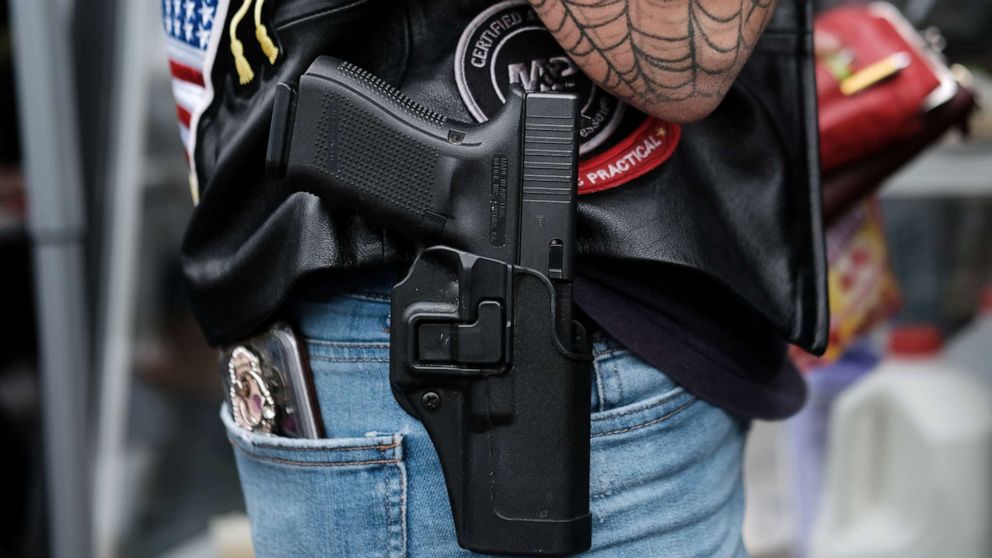The Second Amendment to the United States Constitution, which guarantees “the right of the people to keep and bear arms,” has been a cornerstone of American legal and political discourse for centuries. However, in the 21st century, this constitutional provision has become increasingly polarizing as gun control debates intensify in the wake of rising gun violence, mass shootings, and the proliferation of firearms. This article explores the evolving interpretation of the Second Amendment, the legislative and judicial developments shaping gun control debates, and the broader societal implications of this contentious issue.
The Historical Foundation of the Second Amendment
Ratified in 1791 as part of the Bill of Rights, the Second Amendment was originally crafted to address the concerns of a fledgling nation. The Founding Fathers sought to balance the need for a well-regulated militia with the right of individuals to bear arms. The exact wording reads:
“A well regulated Militia, being necessary to the security of a free State, the right of the people to keep and bear Arms, shall not be infringed.”
For much of American history, the Second Amendment was interpreted narrowly, focusing on state militias rather than individual rights. However, this interpretation began to shift in the late 20th century, culminating in landmark Supreme Court decisions that redefined the scope of the Amendment.
Landmark Judicial Interpretations
District of Columbia v. Heller (2008)
In Heller, the Supreme Court ruled for the first time that the Second Amendment protects an individual’s right to possess firearms, unconnected to militia service. The decision struck down a Washington, D.C., law that effectively banned handgun ownership and required firearms to be kept unloaded and disassembled in homes.
Justice Antonin Scalia, writing for the majority, emphasized that the right to self-defense was central to the Second Amendment’s protections. However, the Court also acknowledged that this right is not unlimited, allowing for “longstanding prohibitions” on firearm possession by felons, the mentally ill, and in sensitive places like schools and government buildings.
McDonald v. Chicago (2010)
Two years later, the Court in McDonald v. Chicago extended the Heller ruling, holding that the Second Amendment applies to state and local governments through the Fourteenth Amendment. This decision invalidated Chicago’s handgun ban and further cemented the individual-rights interpretation of the Second Amendment.
Gun Violence in the 21st Century
The Escalation of Gun Violence
The U.S. has experienced a troubling rise in gun violence in recent decades, including:
- Mass shootings: High-profile tragedies such as those in Sandy Hook, Parkland, Las Vegas, and Uvalde have sparked national outrage and renewed calls for gun control.
- Homicides and suicides: Firearms account for the majority of homicides and suicides in the U.S., highlighting the pervasive impact of gun violence beyond mass shootings.
- Illegal gun trafficking: The ease of obtaining firearms through legal loopholes and illegal markets exacerbates the problem.
Public Opinion on Gun Control
Polling consistently reveals a divided public on gun control:
- Support for reforms: A majority of Americans favor measures like universal background checks, red flag laws, and restrictions on assault weapons.
- Opposition to regulation: A significant segment, often citing Second Amendment rights, opposes additional regulations, fearing government overreach and loss of personal freedoms.
Legislative Battles Over Gun Control
Federal Legislation
Efforts to pass comprehensive gun control measures at the federal level have faced significant challenges:
- Background checks: Proposals to expand background checks to private sales and gun shows have stalled in Congress despite widespread public support.
- Assault weapons ban: The 1994 Assault Weapons Ban expired in 2004, and attempts to reinstate it have been met with staunch opposition.
- Gun safety measures: In 2022, Congress passed a bipartisan gun safety bill, the first significant federal legislation on gun control in decades, which included funding for mental health services and enhanced background checks for young buyers.
State-Level Actions
In the absence of federal consensus, states have taken divergent approaches:
- Strict gun laws: States like California, New York, and New Jersey have implemented stringent gun control measures, including bans on high-capacity magazines and assault weapons.
- Pro-gun states: Conversely, states like Texas and Arizona have relaxed gun laws, adopting measures such as constitutional carry, which allows carrying firearms without a permit.
The Role of Advocacy Groups
Gun Control Advocates
Organizations like Everytown for Gun Safety, the Brady Campaign, and Moms Demand Action have championed gun control measures, focusing on legislative advocacy, public awareness, and support for survivors of gun violence. Their efforts include pushing for:
- Universal background checks.
- Waiting periods for gun purchases.
- Limits on the sale of high-capacity magazines and assault weapons.
Gun Rights Advocates
Groups like the National Rifle Association (NRA) and Gun Owners of America argue that gun control measures infringe upon constitutional rights. They advocate for:
- Expanded gun ownership rights.
- Policies emphasizing personal responsibility and mental health over regulation.
- Armed self-defense as a deterrent to crime.
The Intersection of Technology and Gun Laws
Ghost Guns and 3D Printing
The advent of untraceable firearms, often called “ghost guns,” and the ability to manufacture weapons using 3D printers present new challenges for regulators. These technologies bypass traditional sales channels and background checks, complicating enforcement efforts.
Smart Guns
Smart gun technology, which includes biometric locks and other safety features, has been proposed as a solution to reduce accidental shootings and unauthorized use. However, adoption has been slow due to cost concerns and resistance from gun rights advocates.
Second Amendment Challenges in the Courts
The judiciary continues to play a critical role in shaping gun laws:
- Red flag laws: Legal challenges have arisen against laws allowing temporary confiscation of firearms from individuals deemed a threat to themselves or others.
- Open carry laws: Courts are addressing cases related to public carrying of firearms, including disputes over permitting requirements and restrictions in sensitive locations.
- Post-Bruen cases: The Supreme Court’s 2022 decision in New York State Rifle & Pistol Association v. Bruen struck down a restrictive concealed carry law, emphasizing a historical approach to evaluating gun regulations. This precedent is now influencing challenges to other firearm restrictions.
The Broader Social Implications
Public Safety vs. Individual Rights
The tension between ensuring public safety and protecting individual rights lies at the heart of the gun control debate. While proponents of regulation argue that restrictions are necessary to prevent violence, opponents contend that such measures punish law-abiding citizens without effectively deterring criminals.
Disparities in Gun Violence
Gun violence disproportionately affects marginalized communities. Urban areas with high poverty rates often experience elevated levels of firearm-related homicides, while rural communities face higher rates of firearm suicides. Addressing these disparities requires targeted interventions beyond legislation.
The Road Ahead: Finding Common Ground
As the nation grapples with gun violence and the constitutional debate surrounding the Second Amendment, finding common ground remains a daunting challenge. Potential paths forward include:
- Enhanced background checks: Closing loopholes in the background check system enjoys bipartisan support and could serve as a starting point for broader reforms.
- Focus on mental health: Expanding mental health resources and intervention programs may address some root causes of gun violence.
- Community-based initiatives: Supporting local efforts to prevent gun violence through education, outreach, and economic development can complement legislative measures.
Conclusion
The Second Amendment remains a defining and divisive issue in American society. In the 21st century, the gun control debate has been reignited by escalating violence, evolving technology, and shifting judicial interpretations. Balancing the constitutional right to bear arms with the urgent need to protect public safety will require thoughtful, evidence-based policymaking and a commitment to bridging ideological divides. As the debate continues, the stakes — both for individual rights and community safety — have never been higher.








